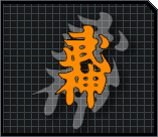|



 What is the real theme for this year? What is the real theme for this year?
 Several people wonder over the training theme for this year in Japan and on the upcoming Taikai. Many quote what the Taikai pages say and this causing some confusion because Sensei have changed his mind over the theme since the Taikai booklets was printed. The main theme for this year (2000) will be KOPPOJUTSU. This includes the KOPPOJUTSU from 3 schools: Koto Ryu Koppojutsu, Gikan Ryu Koppojutsu, Gyokushin Ryu Koppojutsu (Although Gyokushin Ryu is a Ninpo school, only the koppojutsu will be practiced). Also Teppan (a small square steel plate, almost like a Senban Shuriken before it is shaped, which is held in the hand as well as thrown), will be taught (Small squares of rubber or thick cardboard work fine for training). Also the Ninja-to will be taught. So once again to clarify this the theme for this year at the Taikai and in Japan is: Koto Ryu Koppojutsu, Gikan Ryu Koppojutsu, Gyokushin Ryu Koppojutsu, Teppan, Ninja-to. Several people wonder over the training theme for this year in Japan and on the upcoming Taikai. Many quote what the Taikai pages say and this causing some confusion because Sensei have changed his mind over the theme since the Taikai booklets was printed. The main theme for this year (2000) will be KOPPOJUTSU. This includes the KOPPOJUTSU from 3 schools: Koto Ryu Koppojutsu, Gikan Ryu Koppojutsu, Gyokushin Ryu Koppojutsu (Although Gyokushin Ryu is a Ninpo school, only the koppojutsu will be practiced). Also Teppan (a small square steel plate, almost like a Senban Shuriken before it is shaped, which is held in the hand as well as thrown), will be taught (Small squares of rubber or thick cardboard work fine for training). Also the Ninja-to will be taught. So once again to clarify this the theme for this year at the Taikai and in Japan is: Koto Ryu Koppojutsu, Gikan Ryu Koppojutsu, Gyokushin Ryu Koppojutsu, Teppan, Ninja-to.
 Each time I train at the Honbu I feel lost. This time was not different! The theme of this year is Koppo Jutsu. For me Koppo Jutsu was the breaking of bones with bare hands. Hatsumi Sensei changed that into something impossible to transmit through words. I will use a few comparisons to have you understand what I experienced while I was in Japan. Each time I train at the Honbu I feel lost. This time was not different! The theme of this year is Koppo Jutsu. For me Koppo Jutsu was the breaking of bones with bare hands. Hatsumi Sensei changed that into something impossible to transmit through words. I will use a few comparisons to have you understand what I experienced while I was in Japan.
We all know about the Ten Chi Jin principles. If you accept that: Ten is the body movements, Chi is the techniques you can do when you are at the good distance, Jin is the mix of body movement and techniques.
If you accept that: Ten movements are used to break the distance Chi techniques to break your Uke Jin are the techniques from the different schools
Now if you take a technique like Batsugi (Koto Ryu). We know that this technique is uke nagashi ura, uke nagashi ura + omote gyaku. The two uke nagashi are Ten; the omote gyaku is Chi. The mix of these two parts is Jin. Understand that by following the sequence you are not practicing "Koppo jutsu", you are merely trying to do a pre-established set of mechanical movements. But if you use the sequence as a starting point for making your taijutsu alive then it becomes Koppo jutsu. The next step is to do batsugi by changing the ura in omote and the omote gyaku in another basic technique.
If Uke grabs you instead of throwing the second fist then you can throw instead of twisting the wrist or even apply a shime waza.
After exploring the various (and endless) possibilities of this movement you begin to grab the essence of the movement. The idea hidden behind the form, the natural aspect of batsugi. This is something beyond the mechanics of your own body, something existing without any pre-conceived thinking. The last step for reaching an even deeper understanding of Koppo jutsu will be the use of all the weapons you can to make this batsugi alive. you will use the different sizes to explore with your legs and body all the angles and opportunity, whether it is against someone armed or not.
One year, we studied the "soft" movements of Shinden Fudo Ryu; the year after we studied the "hard" movements of Kukishinden Ryu this year we had the "no-movement" state where Kyojitsu is the rule and adaptiveness a reality.
:: bact to Articles ::
BUJINKAN GREECE NINPÔ TAIJUTSU
Visit Now the official web site of Bujinkan Greece Ninpô Taijutsu and cherche the International and National Seminars and Taikai [with the famous shihan of Europe].
And more......
|

 |
JUPPO SESSHO
HIBUN NO KAMI
|
Ο όρος Juppo Sessho αναφέρεται κύριως στη χρήση μικρων, συχνα μυστικών όπλων, τα οποία είχαν οι samourai και οι ninja. Kάθε σχολή του Bujutsu αφιέρωνε ένα μέρος της εκπαιδευσης στη μελέτη του Juppo Sessho.
Πληροφοριες:
Bujinkan Greece

 |
Saigo no Jissen Ninja Takamatsu Toshitsugu
|
The DVD on Takamatsu Sensei. The comments on this fantastic film are by Hatsumi Sensei. English subtitles.

|









